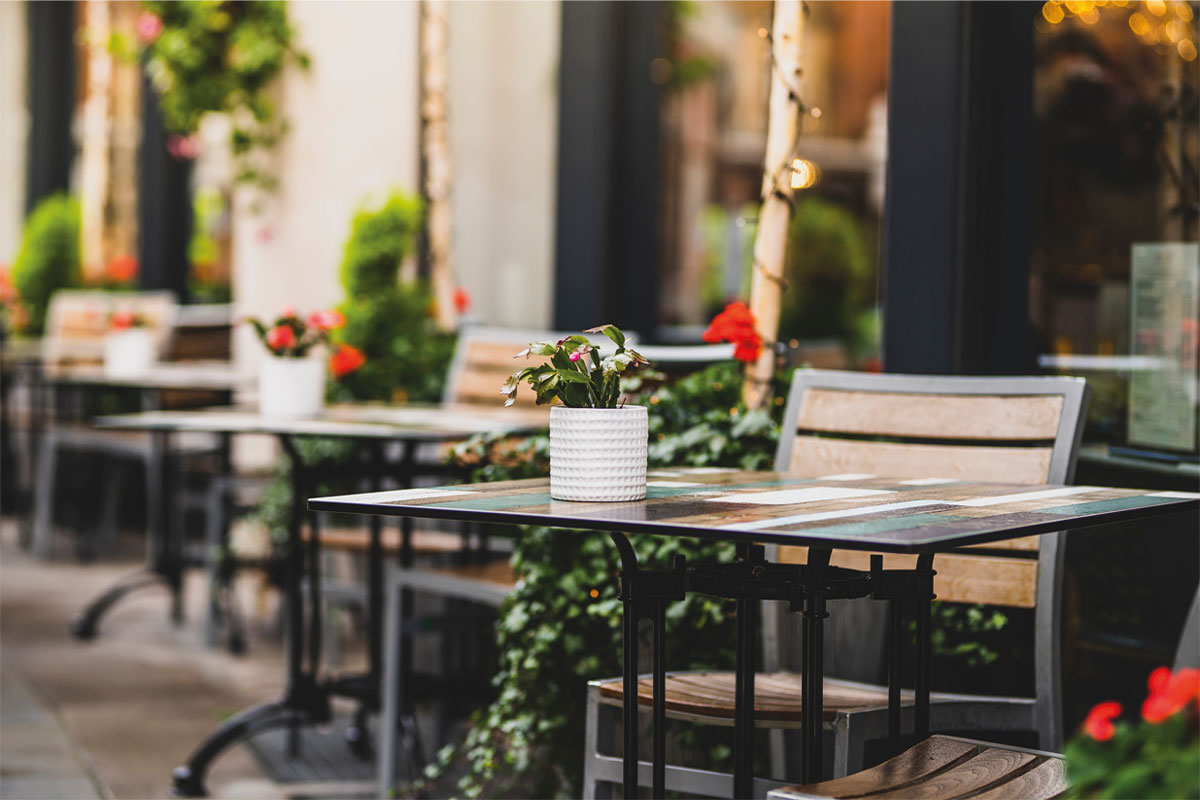Shift to outdoor eating and drinking during pandemic has left lasting legacy

OUTDOOR areas have long been an important revenue stream for venues fortunate enough to have them; but they proved to be a lifeline for many during the pandemic – from at one stage being the only place venues could serve alcohol without food, to providing additional capacity when indoor numbers were curtailed due to social distancing measures.
As a result, consumers are said to have become more accustomed to al fresco eating and drinking – and more inclined to use outdoor areas when the weather is less than tropical.
And it seems that’s a trend that’s here to stay.
Trevor Ruddle, managing director of Indigo Awnings, said the pandemic saw “establishments with even the smallest outdoor area” make use of the space to accommodate customers.
“This move highlighted the fact that previously unused areas could increase footfall and thus profits and the vast majority of outlets seized this opportunity,” he said.
“Outdoor areas were turned into attractive spaces which provided weather protection, some with heaters, lighting and planters, all were a huge success which drew friends and families to them. This, in turn, has created a new trend in terms of business expansion which does attract new customers all year round – and not just for the summer months.”
Paul Muckle, marketing director at Contract Furniture, agreed that use of outdoor spaces has changed in the wake of the pandemic.
“The public psyche has shifted in the past two years to be more appreciative of fresh air and open space,” he said.
“A significant number of people would now prefer to wrap up and brave the elements rather than socialise in close proximity to other people – making well-constructed and comfortable exterior areas essential to capturing their business. Expectations probably remain the same, but the level temperatures have to be before drinkers, and even casual diners, feel the need to head indoors certainly seems to have dropped.”
And Adrian Byne of Benholm Group said consumers have become “outdoor dining connoisseurs”.
“Due to the variety of restrictions the hospitality industry was forced to operate under, many consumers will now have experienced al fresco dining from a variety of venues,” he said. “This experience makes consumers more knowledgeable and qualified to define what makes a great outdoor space, and their expectations will, therefore, be higher as a result.”
Advising operators to invest in “good quality equipment”, Byne said “ideally the exterior should match or at least feel cohesive with the interior design”.
“A great outdoor area will increase the capacity of a venue and can provide a valuable source of income all year round – a key opportunity at a time when many are trying to recuperate operating losses,” he said.
“Design everything from a customer experience perspective. Avoid cutting corners and doing things as cheaply as possible. Things like plants, flowers, lighting, wi-fi and music can transform some of the most utilitarian outdoor spaces into really popular destinations.”
That was echoed by Paul Muckle at Contract Furniture, who said “people want experiences wherever they go now”.
“Past this, operators need to consider much more than just the look and feel of their furniture,” said Muckle.
“They need to think about how seating and structures will be used (or misused) by guests.
“How long they need units to last to represent a good return, and how varying items can be utilised to give spaces diversity in terms of form and function.
“Everything then needs to come together and interact in such a way that brings the vision to life.
“Outdoor spaces have never been as important to a hospitality venue’s ongoing success.”



















